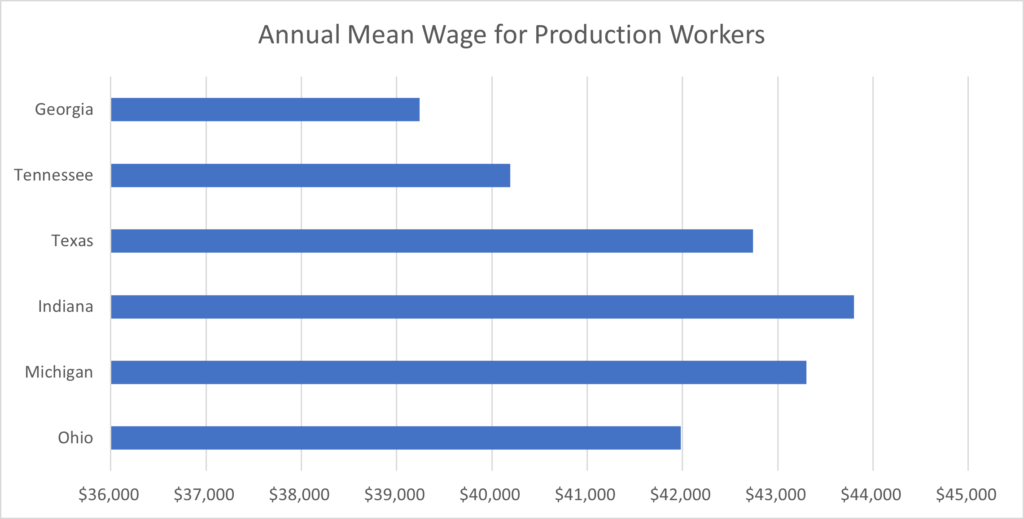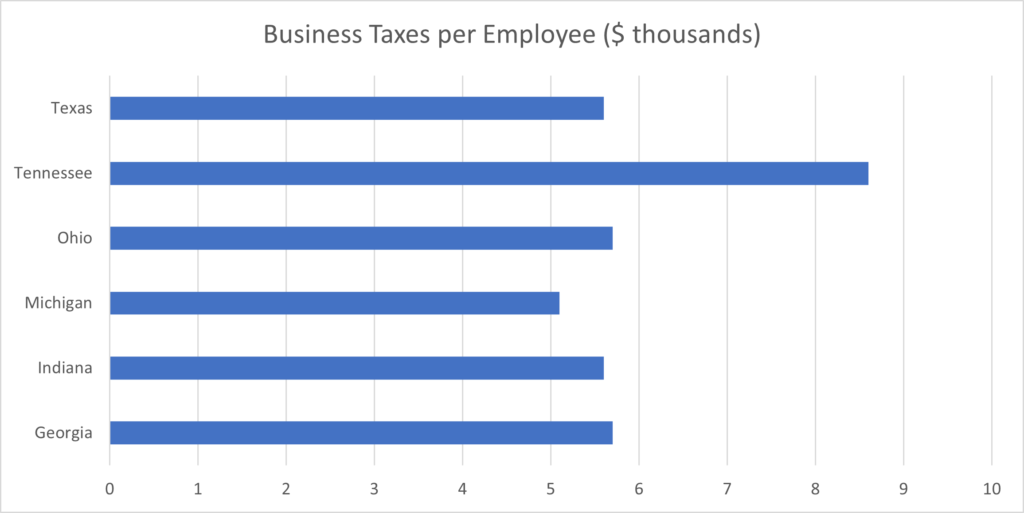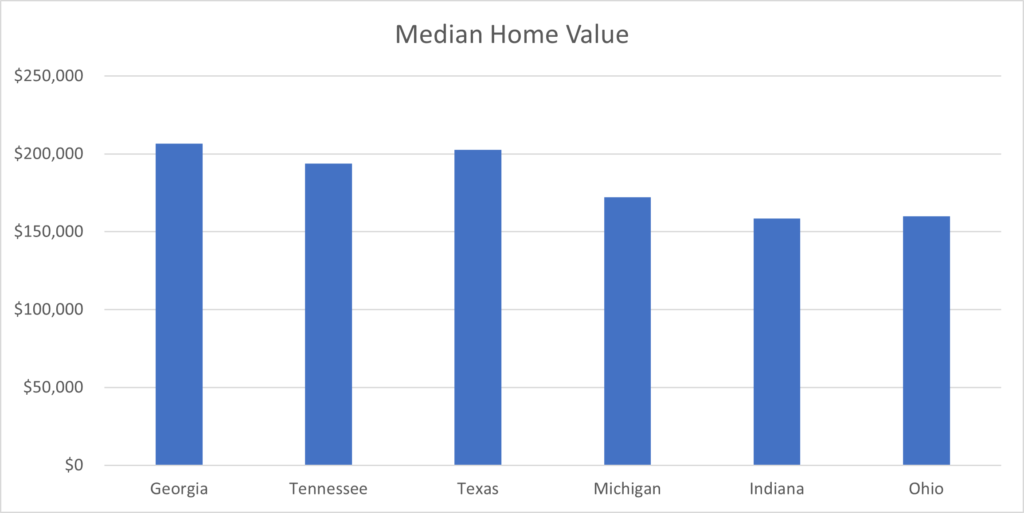While the South and Southwest regions of the United States will continue their long-term population growth, growing pains in these regions create an opportunity for the Industrial Midwest to rise once again. Rising labor rates, housing, real estate, and construction costs matched with infrastructure struggling to keep up with large population growth in the South and Southwest create an opening for the Industrial Midwest to capture additional manufacturing, life sciences, and other growing industries in 2023.
For four decades, the South has grown its base of manufacturing jobs—taking much away from the Great Lakes states. Much of that growth has been driven by a lower cost of business. As illustrated by the chart below, major manufacturing states such as Georgia, Tennessee, and Texas do have lower wage rates for production workers than their counterparts in Ohio, Michigan, and Indiana—however, these Great Lakes states remain competitive from a wage standpoint.

Worker wage advantages don’t carry on to the benefit of key southern manufacturing states. As the chart below illustrates, the business taxes applied to companies in Georgia, Tennessee, and Texas are either on par or higher than the states of Indiana, Michigan, and Ohio apply to local companies. This data from the Council of State Taxation 2021 report illustrates that the Great Lakes industrial states have focused their state tax policy to benefit manufacturing companies. Also, states like Texas and Tennessee that lack an income tax are forced to apply additional taxes to companies because individuals are not paying income taxes to pay for essential local and state public services.

The south is losing its cost advantage in areas other than taxes on businesses. As the chart below illustrates, the median home values of Georgia, Tennessee and Texas are higher than Indiana, Michigan, and Ohio. This increased cost will be even higher in markets like Austin, Dallas-Fort Worth, Houston, Nashville, and Atlanta which have experienced a boom in population with a boom in housing options.

Demographic measures do not help the southern states compared to the Great Lakes states either. Poverty rates are the same or higher in Georgia, Tennessee and Texas as in Indiana, Michigan and Ohio. The southern states have enjoyed substantial population growth which is a major workforce advantage; however, this sample of southern states has a civilian labor participation rate that is again on par or lower than their Great Lakes counterparts. The South is still a very strong global market, but the Great Lakes states are showing economic life through aggressive public policy decisions, less growth creating a lower cost of living increasing and a remaining strong industry employer base. 2023 should be a strong year for the Great Lakes states.